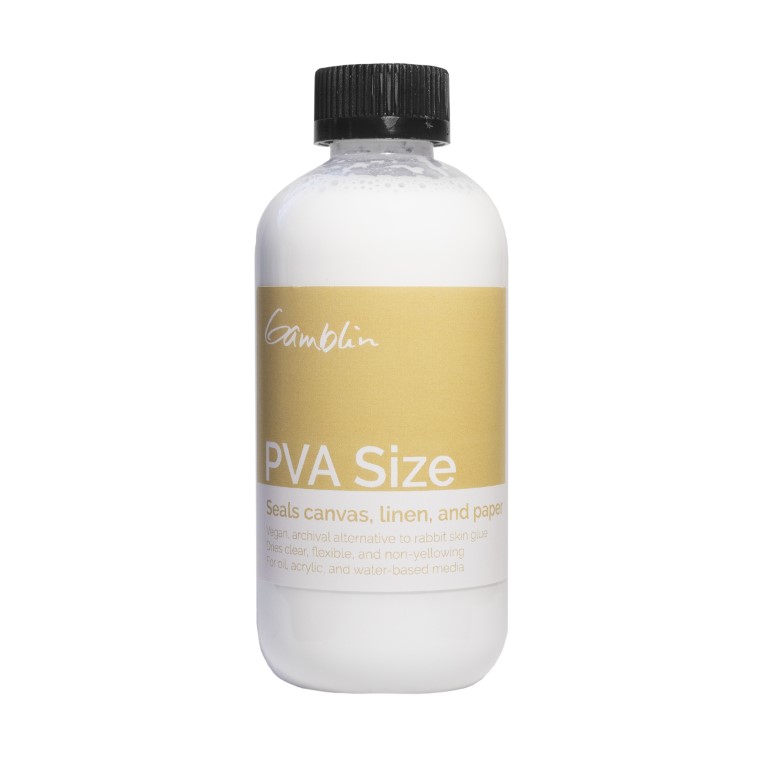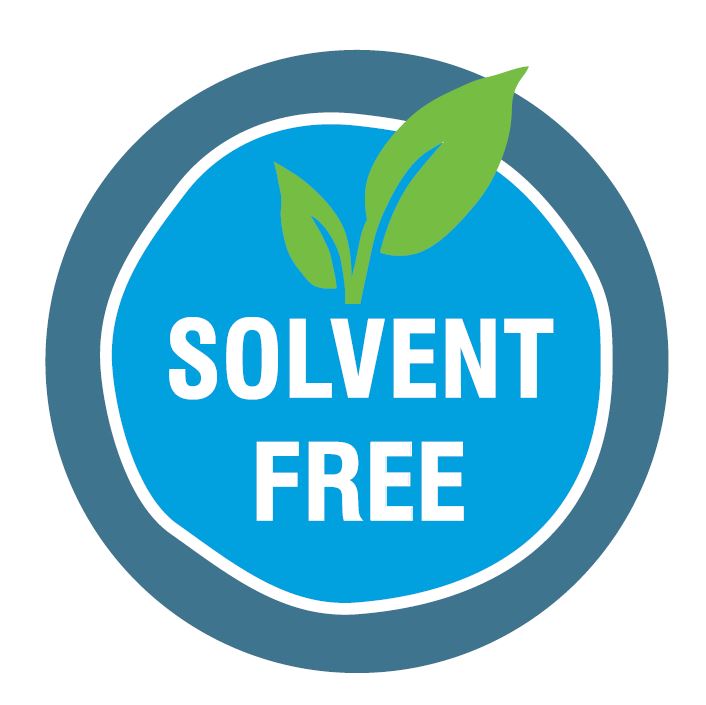Sizes and Grounds
A Ground or Gesso is the foundation of an oil painting. The choice we make determines in large part how painting will feel, mark-making possibilities, and how our colors will look when our painting is dry.
An acrylic gesso made from synthetic polymer imparts a plasticky texture. An absorbent, thirsty clayboard can cause sunken, desaturated color. A ground with tooth helps grab paint off the brush, meanwhile a smooth surface lends to fine detail linework.
Gamblin PVA Size seals the porous fibers of fabric or paper and isolates those fibers from your Gesso, Ground and oil colors. This protects the fibers from acid, making the surface archival. Only fabric and paper supports need sizing.
Panels can withstand the acid in oil and may be prepared with just Gamblin Ground. If one wanted to prepare a panel substrate more and reduce absorbency before painting or priming, we suggest using a dilluted alkyd medium or Gamblin 3-in-1.
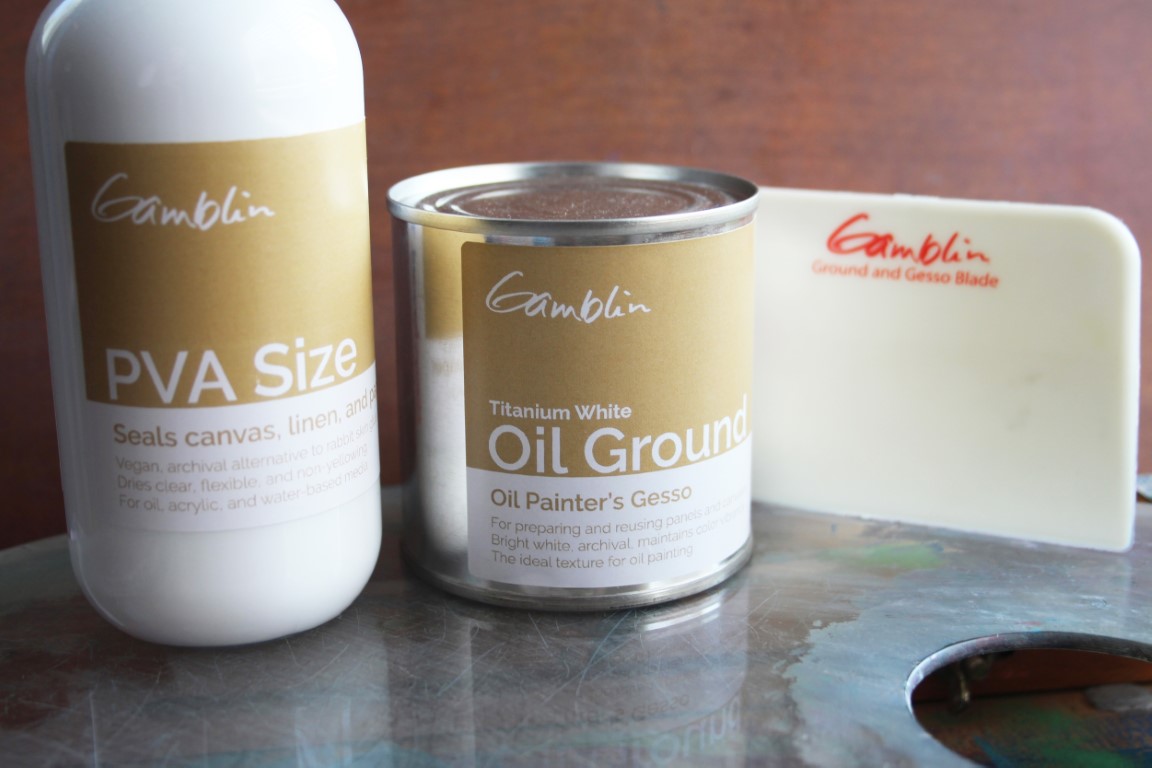
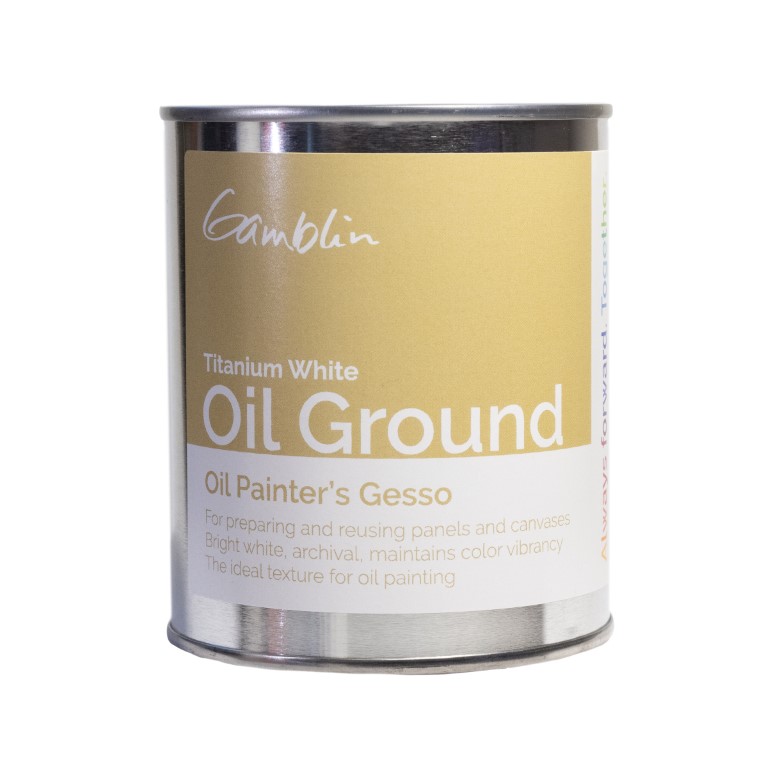
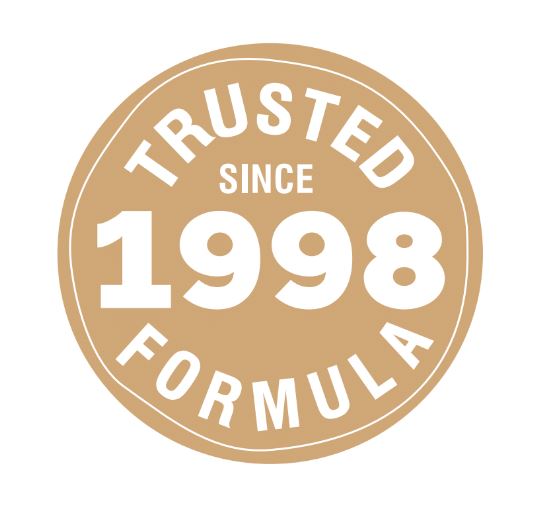
Gamblin Ground
Gamblin Oil Painting Ground makes a strong, bright, non-absorbent foundation for oil paintings. Gamblin Ground is formulated from alkyd resin, titanium dioxide, and calcium carbonate – titanium dioxide gives opacity, while calcium carbonate gives tooth for strong adhesion.
Gamblin Ground makes a brighter and less-absorbent ground layer compared to acrylic gesso primers, meaning that the oil paint layers on top will better retain their color saturation. The lower absorbency also allows for reductive painting techniques when painters need to wipe back into the white of their Ground.
Oil Ground Uses
Due to a higher pigment load, Gamblin Ground is thicker than acrylic gesso, and requires less coats and different application techniques. Oil Ground should be applied in 1-2 thin applications. For a perfect, even application from edge-to-edge check out our Ground and Gesso Blade
Gamblin Ground may be used to cover an old painting. This is an economical way to reuse your canvases or panels when the painting doesn’t turn out the way you hoped.
Gamblin Ground may be applied directly over an acrylic primed canvas or panel to provide a bright white surface, reduce absorbency and improve color saturation.
Oil colors and dry pigment may be mixed into Gamblin Ground to create a tinted ground. There are numerous expressions out there about “blank, white canvases”. Unfortunately, the phrase doesn’t actually apply to all forms painting. Starting with a tinted ground can help you explore more possibilities in your work.
Clean Up for Oil Ground
Plan on priming a bunch of panels and/or canvases in the same session. Gamsol is recommended for cleanup of your tools after using Oil Ground.
Gamblin Ground is available in the following sizes: 8 fl oz, 16 fl oz, 32 fl oz.
A 8 fl oz. of Oil Ground will cover 12 square feet of canvas with an application of two thin coats.
Poly Vinyl Acetate (PVA) Size
A raw canvas should be sized with Gamblin PVA Size before applying Oil Ground or oil color.
Conservation scientists recommend painters use neutral pH PVA size canvas and paper instead of rabbit skin glue. PVA Size provides a stable size layer that seals the canvas but does not swell or shrink like rabbit skin glue does. This is because PVA size does not re-absorb atmospheric moisture.
Gamblin PVA Size is made from PVA that is free of animal byproduct, has a neutral pH, and does not yellow. It also retains its flexibility and does not emit harmful volatiles. PVA Size is too thin to be used as an adhesive. For adhering fabric or paper to panels, use a full strength glue.
PVA Size on Canvas
Use any style of brush to scrub PVA Size into your canvas. You can apply PVA Size before or after stretching.
A single coat of PVA Size on the front of the canvas is usually sufficient for application. If the canvas has a very open weave showing many pinholes when held up to the light, apply PVA Size to both the front and back.
If you are stretching your canvas before applying PVA Size, ensure that canvas is stretched evenly and tightly. PVA Size will tighten a stretched canvas initially when wet but may relax somewhat once dry. PVA size will not result in any dramatic difference in the tightness of the canvas like rabbit skin glue.
For very large dimension stretched canvas or when using lightweight linen, apply PVA Size first prior to stretching. Lightweight canvas on larger stretchers can buckle and/or wrinkle on the stretcher frame when dry. Heavier weight canvas has less of a tendency to buckle or loosen.
Also note that linen can shrink in total dimension after your application is PVA Size is dry. The fabric should be cut slightly larger to accommodate for this.
Soap and water can be used to clean brushes after application of PVA Size.
PVA Size on Paper
There are papers which are already sized and designed for oil painting. Heavy water media papers like watercolor, mixed-media and some printmaking papers may be used for oil painting once properly treated. Gamblin PVA Size can be used as a sealant for that purpose. The appearance of most papers are changed very little once the PVA Size is completely dry.
Only the side of the paper to be painted on with oil colors requires sealing with PVA Size. To limit wrinkling, some papers may require taping down to a rigid panel before applying PVA Size. Allow the sized paper to dry completely before removing the tape. Most paper will require 2 coats of PVA Size. Allow all moisture to evaporate out of freshly sized paper (about 24 hours) before applying Oil Ground and/or Artists Oil Colors.
Painting on PVA Size alone
PVA Size can be used on its own as your ground without the use of a white or colored primer over the size.
This can be used when a painter wants to allow the natural color and look of the canvas or paper to show through in parts of their oil painting. Although PVA Size is not itself a ground, it may be used in lieu of a white covering primer to protect canvas from the acidity of oil colors.
In these scenarios you should apply two applications of PVA Size to help reduce the absorbency of your canvas. PVA Size is formulated to go on very thinly without filling in the natural texture of the canvas.
PVA Size is available in the following sizes: 8.5 fl oz, 33.8 fl oz.
A 8 fluid oz. bottle of PVA Size covered about 10 square feet.
